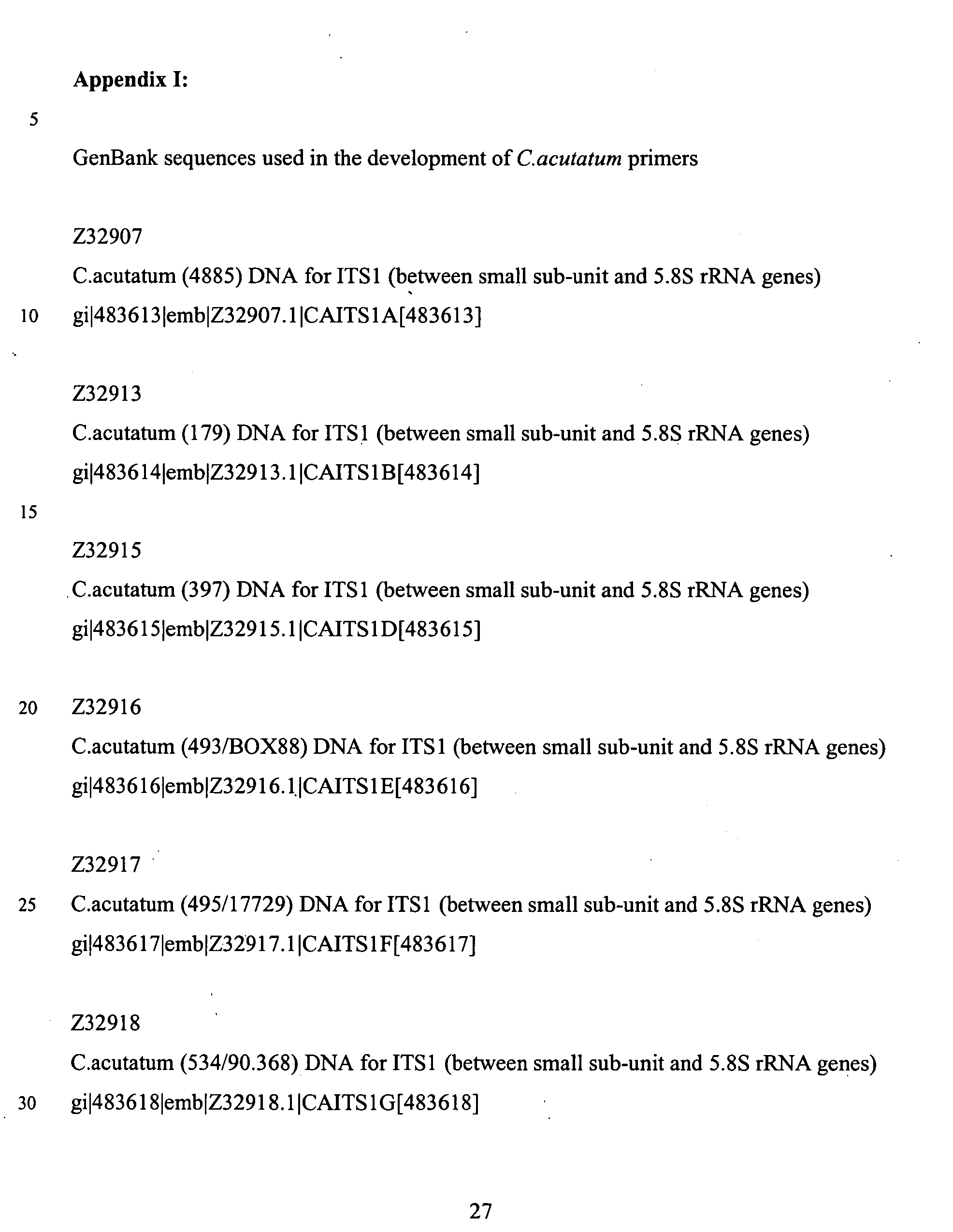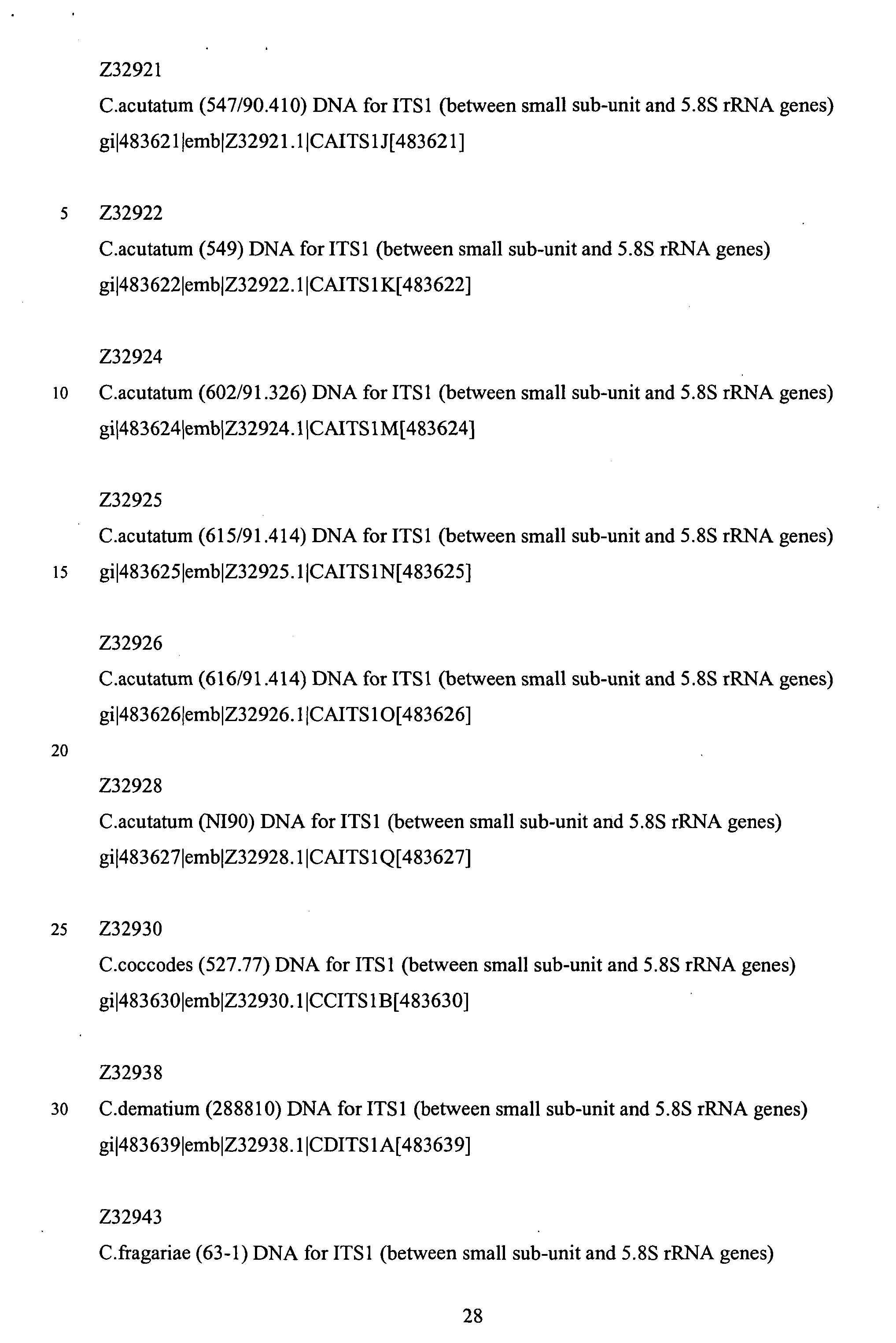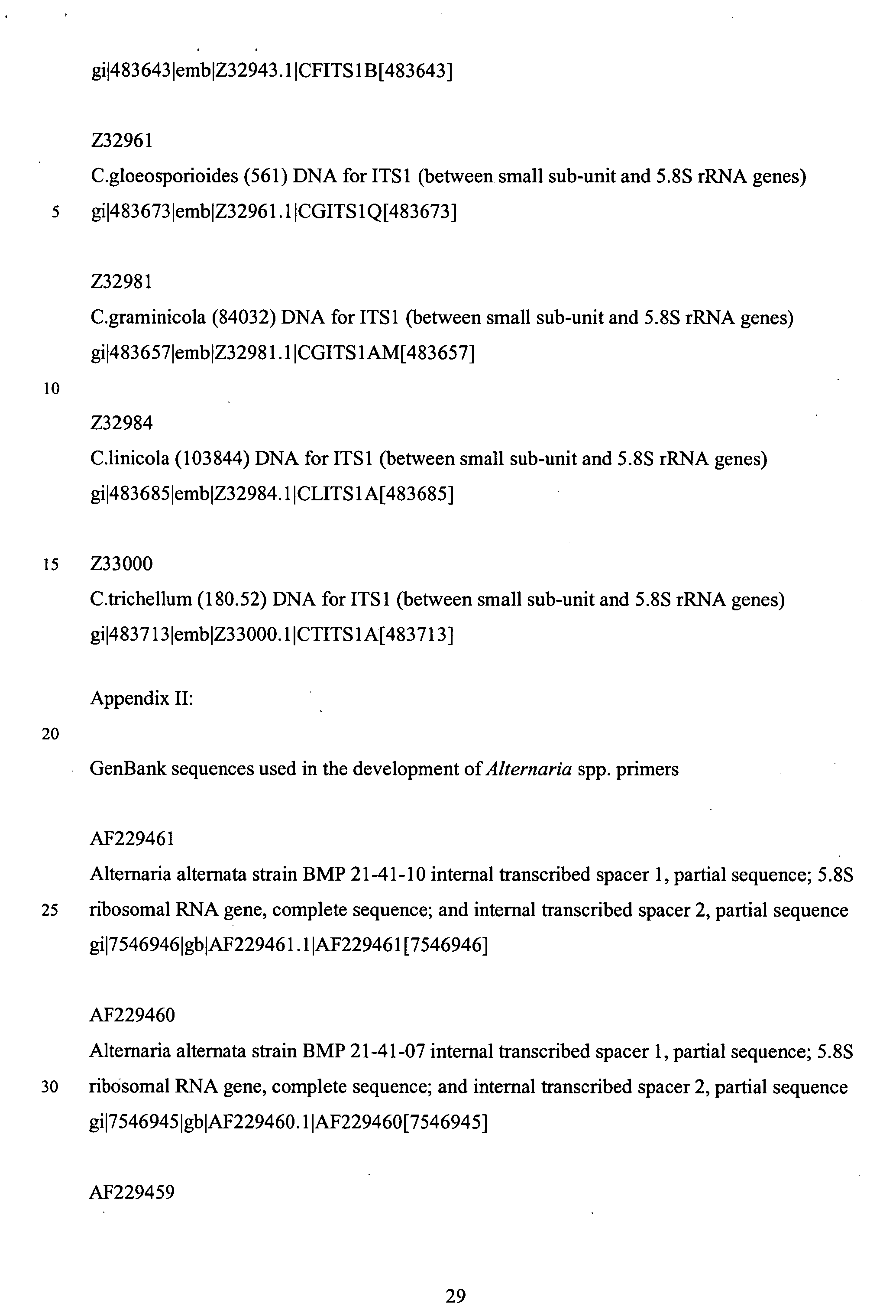Detection of fungal pathogens using the polymerase chain reaction
a technology of polymerase chain reaction and detection of fungal pathogens, which is applied in the field of primers in polymerase chain reaction assays, can solve the problems of shortfall in the nutritional provision of local populations, economic deprivation of farmers, and crop loss
- Summary
- Abstract
- Description
- Claims
- Application Information
AI Technical Summary
Benefits of technology
Problems solved by technology
Method used
Image
Examples
example 1
Fungal Isolates and Genomic Fungal DNA Extraction
[0086]See Table 1 for a listing of the fungal isolates used and their source. Fungi are grown on PDA (Potato Dextrose Agar) plates. Cultures are incubated for up to 10 days at 28° C. Mycelia are ground in liquid nitrogen, and total genomic DNA is extracted using the protocol of Lee and Taylor (1990; In: PCR Protocols: A Guide to Methods and Applications; Eds.: Innes et al.; pages 282–287).
[0087]
TABLE 1Source of Test IsolatesIsolateSourceIsolationGeographic OriginColletotrichum acutatum26255ATCC1TomatoNew ZealandColletotrichum acutatum42373ATCC1MangoAustraliaColletotrichum acutatum60468ATCC1VacciniumNew ZealandColletotrichum acutatum66367ATCC1StrawberryIndiana, USAColletotrichum acutatum38689ATCC1Pinus—f.sp. pinearadiataColletotrichum44228ATCC1StylosanthesAustraliagloeosporioideshamata cv.VeranoColletotrichum38237ATCC1Mango—Cladosporium carpophilum52935ATCC1PeachGeorgia, USACladosporium carpophilumBS-1Jones2PeachMichigan, USACladospori...
example 2
DNA Extraction from Almond Tissues
[0088]DNA was extracted from almond leaves by using a bulk maceration method with a modified version of the CTAB extraction buffer (Wang et al., 1993, “PCR amplification from single seeds, facilitating DNA marker-assisted breeding,” Nucleic Acids Res. 21:2527). The bulk maceration method was used to isolate DNA from several naturally infected tissues from the field. The potential concentration ranges of the buffer ingredients of the modified CTAB extraction buffer are as follows:
[0089]approximately 100 mM Tris, pH 8.0;
[0090]0.2–2.0 M NaCl;
[0091]1–200 mM ethylenediaminetetraacetic acid (EDTA);
[0092]0. 1–5% w / v hexadecyltrimethylammonium (CTAB);
[0093]0. 1–5% w / v polyvinylpyrolidine (PVP); and
[0094]0.01–2% w / v ascorbic acid.
[0095]In other embodiments of the invention, the DNA extraction buffer comprises 100 mM Tris, pH 8.0; or comprises 1.4 M NaCl; or comprises 20 mM EDTA; or comprises 2% w / v CTAB; or comprises 2% w / v PVP; or comprises 0.1% w / v ascorbi...
example 3
Polymerase Chain Reaction Amplification
[0128]Polymerase chain reactions are performed with the GeneAmp Kit from Perkin-Elmer (Foster City, Calif.; part no. N808-0009) using 50 mM KCl, 2.5 mM MgCl2, 10 mM Tris-HCl, pH8.3, containing 200 μM of each dTTP, dATP, dCTP, and dGTP in either 25 or 50 μL reactions containing 50 μM each primer, 0.25 U / μL of Taq polymerase and 0.2 ng / μL of genomic DNA. Reactions are run for 30–40 cycles of 15 s at 94° C., 15 s at 50° C.–70° C., and 45 s at 72° C. in a Perkin-Elmer Model 9600 or 9700 thermal cycler. The products are analyzed by loading 10 μl of each PCR sample on a 1.0% agarose gel and electrophoresing.
PUM
| Property | Measurement | Unit |
|---|---|---|
| volume | aaaaa | aaaaa |
| concentration | aaaaa | aaaaa |
| concentration | aaaaa | aaaaa |
Abstract
Description
Claims
Application Information
 Login to View More
Login to View More - R&D
- Intellectual Property
- Life Sciences
- Materials
- Tech Scout
- Unparalleled Data Quality
- Higher Quality Content
- 60% Fewer Hallucinations
Browse by: Latest US Patents, China's latest patents, Technical Efficacy Thesaurus, Application Domain, Technology Topic, Popular Technical Reports.
© 2025 PatSnap. All rights reserved.Legal|Privacy policy|Modern Slavery Act Transparency Statement|Sitemap|About US| Contact US: help@patsnap.com



